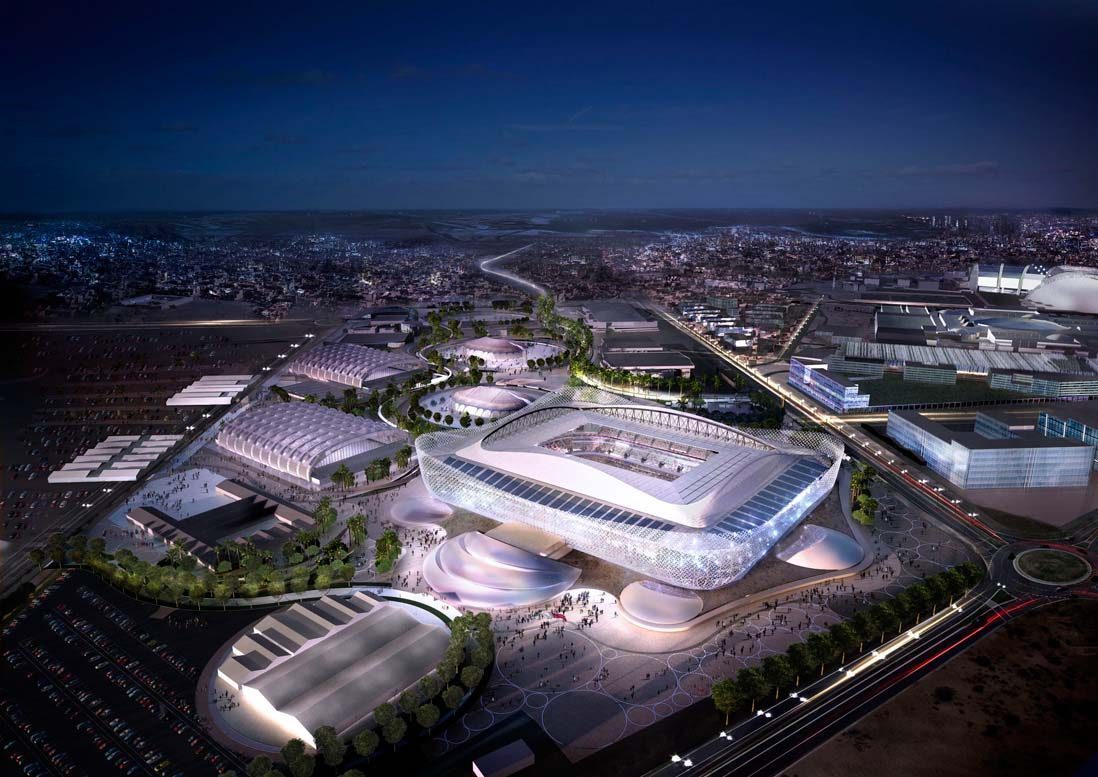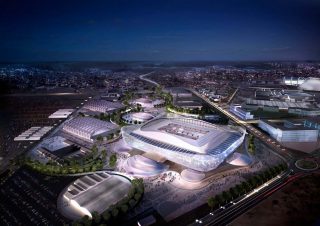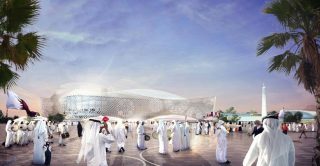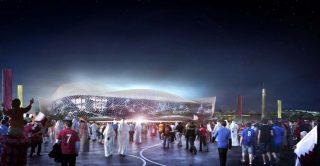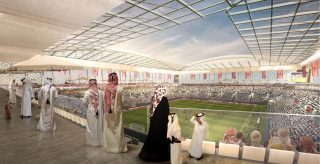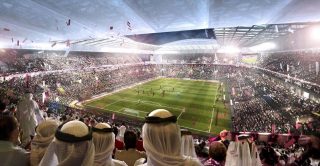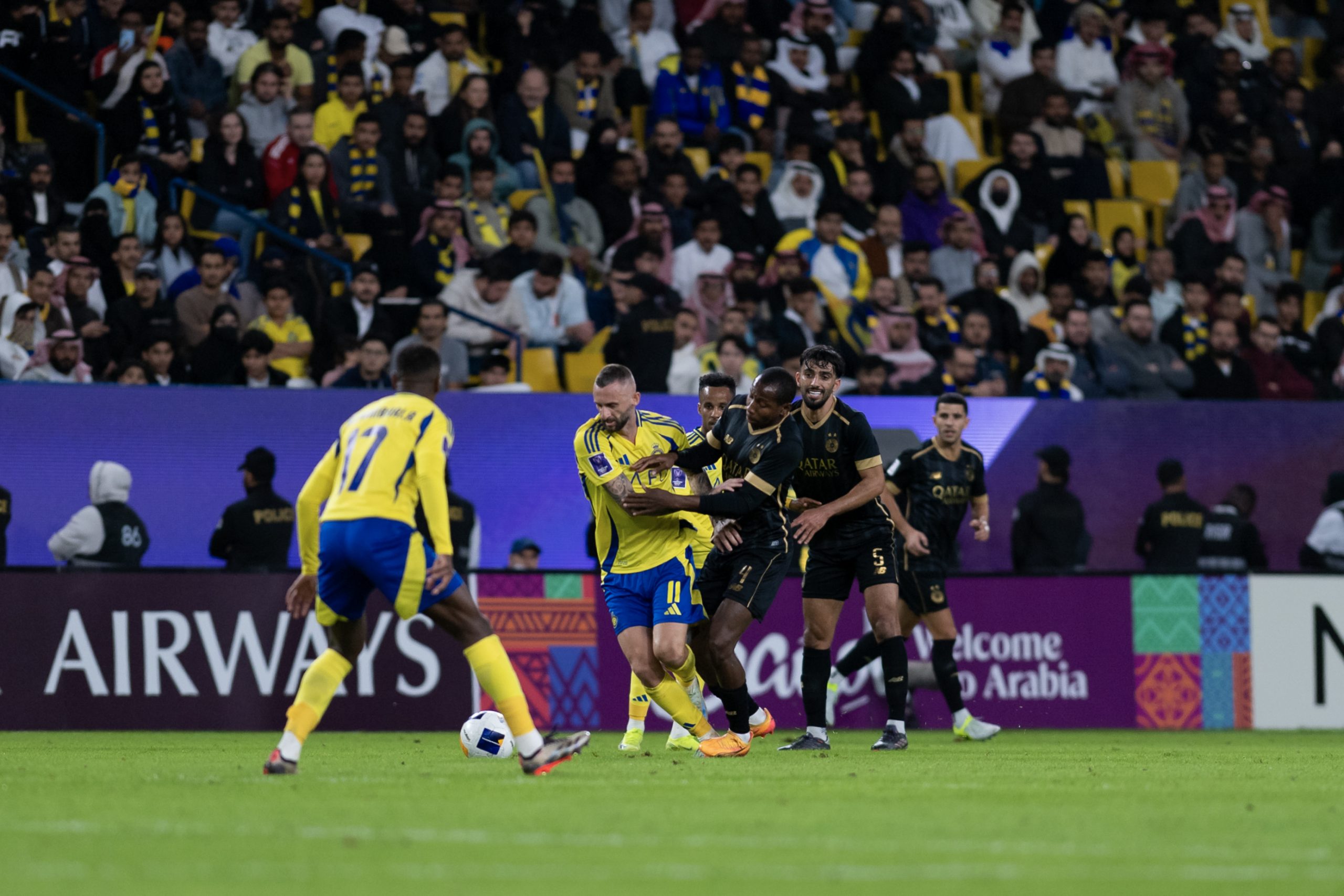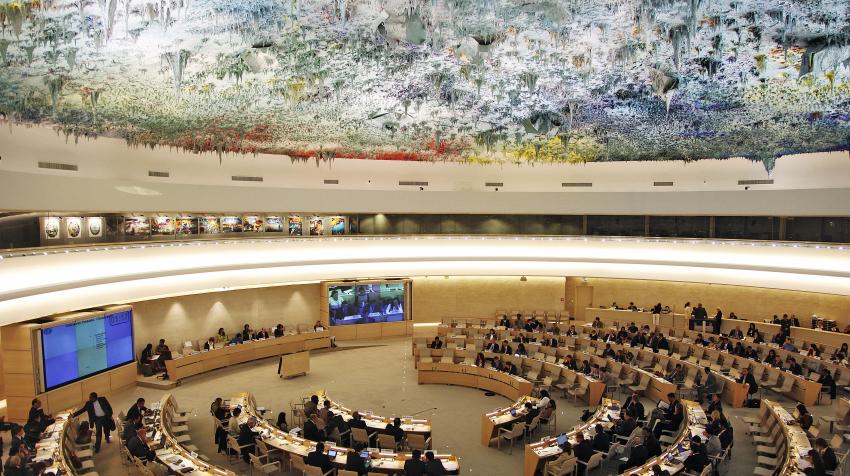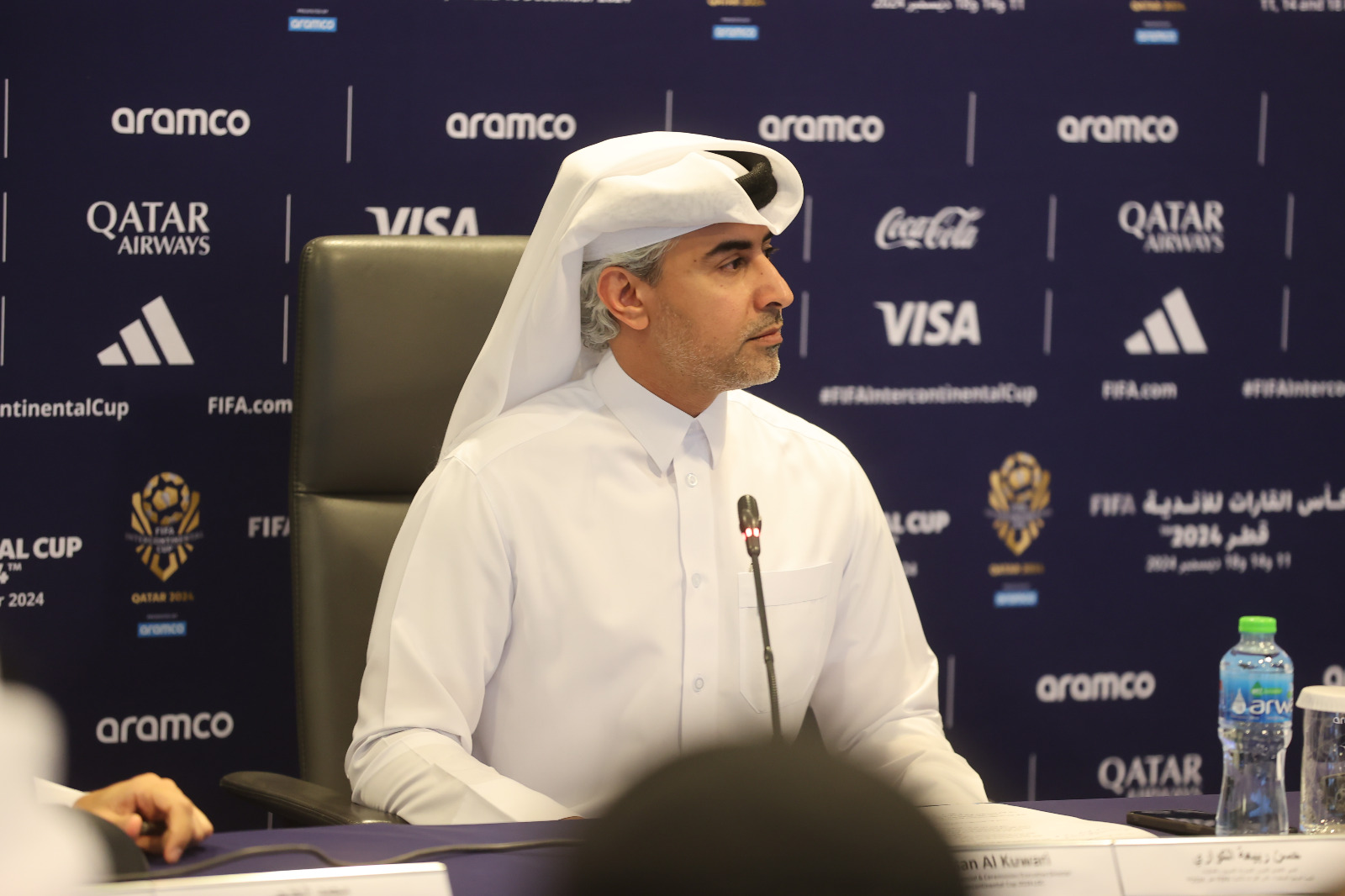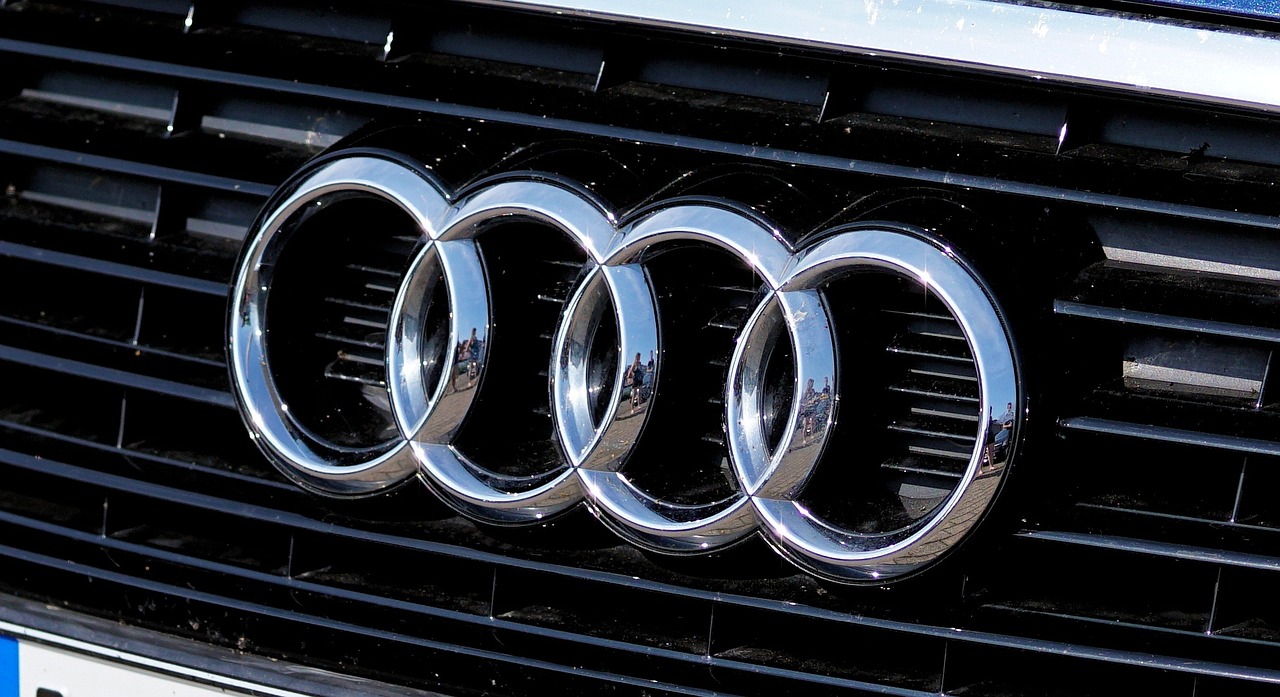All photos courtesy of the Supreme Council for Delivery and Legacy
In a glitzy ceremony last night, Qatar’s 2022 World Cup organizing committee has revealed a new desert design for its fifth football stadium.
The new 40,000-seat capacity complex will be built on the site of the now-deconstructed Ahmed Bin Ali Stadium in Al Rayyan.
The former structure was intended to serve as the basis of the new stadium, but ended up being torn down to meet FIFA’s technical requirements for a proposed World Cup host venue.
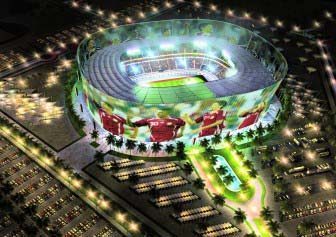
While the facility was originally designed to look like it was wrapped in a massive digital display board, the new plans for the stadium, located some 20km west of Doha’s city center, look markedly different.
Designed by UK-based Ramboll and Pattern, the rectangular-shaped building is slated to have soft corners and undulating waves, drawing on Islamic geometric influences that are also evident in the facade of Qatar’s iconic Burj Qatar building in West Bay.
In a statement, the Supreme Committee for Delivery and Legacy (SCDL) said the Al Rayyan stadium boasts seven patterns:
“Shield, desert rose, chain, nut heart, banana spiral, palm tree and bridal ring patterns. One of the six includes the bridal ring, a pattern referencing the heart of the stadium which unifies family and society. The pattern is also inspired by the Islamic and cultural concept of women at the core of the family and their important role in society.
The shield pattern, which predominantly weaves in the other six patterns, represents loyalty, unity and perseverance. The patterns unify to form one grand pattern for Al Rayyan, defining the past and future. The third and fourth patterns in the new design play on nature; the desert rose, a unique symbol of the natural ornaments in the desert, and the palm tree.”
Features
When completed in 2019, dune-like structures meant to resemble the sand dunes that surround traditional desert tents will flank the stadium and host multi-functional hospitality and service areas.

The stadium also has two giant screens for match replays, close-ups, and other graphics, and 3,400 parking spaces.
Adjacent “precinct” facilities in the building’s enclosure include mosques, a members club, an athletics track, cricket, hockey, and football training pitches, tennis courts, an aquatics centre, a skating park, a cycling track and shaded walkways and fountains.

The proposed design also features nearby facilities like the Al Rayyan Doha Metro link, located five minutes from the currently under-construction Mall of Qatar as well as a new branch of the ultra-modern sports medicine hospital, Aspetar.
Manco International General Contracting W.L.L, a joint venture between Manco, a subsidiary of the Al Mana Group, and Buckingham Group Contract are in charge of the stadium’s early works and preliminary deconstruction, while multi-national American corporation AECOM has been booked as the complex’s project manager.
After the 2022 World Cup, where the stadium will host matches up to the quarter finals stage, the complex’s capacity will be almost halved, with 19,000 seats in the upper tier removed and gifted to developing football nations in need of sporting amenities.
Sustainability
In a bid to promote sustainability in a largely fossil-fuel driven economy, the new stadium will be built with some with 90 percent of the materials from the deconstructed complex.

In a statement, the SCDL said some of the debris and materials will also be used by local and international artists to create works of public art that reflect the history of Al Rayyan Sports Club.
The Supreme Committee added that the new stadium would aim to reduce its own carbon footprint through on-site renewable energy sources, a lightweight building design, careful selection of materials and both energy and water efficiency measures.
The stadium is also designed with the goal of certification under both the Global Sustainability Assessment System (GSAS) and Leadership in Energy and Environmental Design (LEED) ratings.
Finally, to offset Qatar’s heat, the stadium is slated to be fitted with sustainable cooling technology to ensure comfortable viewing conditions for fans and an optimal playing temperature for players both during and after the World Cup.
Other stadiums
When Qatar bid for the games, it proposed readying 12 stadiums for the World Cup. That included a major renovation of three stadiums (Al Gharafa, Al Rayyan and Khalifa International), as well as the construction of nine new stadia.
However, that number is now expected to be pared down to so that the tournament is played in eight stadiums (the minimum requirement). A decision on the final number is expected to be made by FIFA this year.
So far, Qatar has unveiled plans for four of its other World Cup stadiums: in Al Khor, Al Wakrah, the Aspire Zone and Qatar Foundation. Each facility is expected to seat some 34,000 to 60,000 people.

The Al Khor stadium, dubbed “Al Bayt,” is based on the traditional Bayt Al Sha’ar, a white and black tent used by nomads in Qatar, and is one of the proposed venues for the world cup semi-finals. It is expected to be completed by 2018.

Next is the Aspire Zone’s existing 30-year-old Khalifa Stadium. The complex is expected to be refurbished to keep with FIFA standards, nine years after a US$90.12 million renovation done prior to the Asian Games.
In the southwest, the Al Wakrah Stadium, a modular structure based on the traditional dhow boat, will seat some 40,000 spectators during the World Cup, and around half that amount afterwards. Enabling works have been ongoing and the stadium is expected to be completed by 2018, three years later than the initial proposed date.
And the last venue with a design so far is a 40,000-seat diamond-inspired Education City stadium, part of the larger QF Stadium & Health and Wellness Precinct, which will include gymnasiums, a swimming pool, tennis courts, medical clinics and areas for other athletic activities.
Other confirmed sites for stadiums include Qatar Sports Club in Dafna/West Bay, and another venue near the new airport.
The eighth venue will be in Lusail City, which will host the World Cup opening ceremony and final match in 2022. That stadium is currently in the design phase.
All contracts for the stadium projects are to be governed by the SCDL’s Workers Welfare Standards, which were announced in 2013 and outline a number of basic rights that all contractors working on World Cup-related projects in Qatar are required to follow.
Thoughts?

